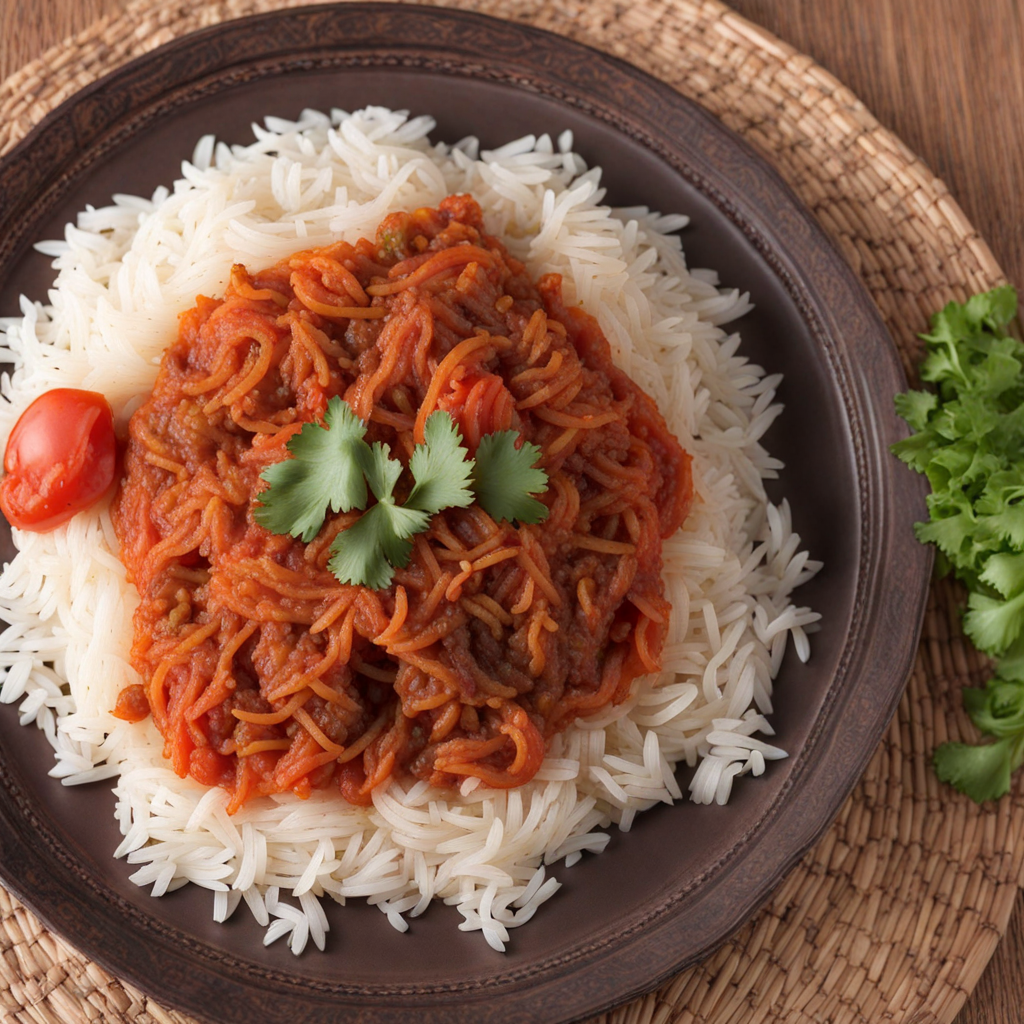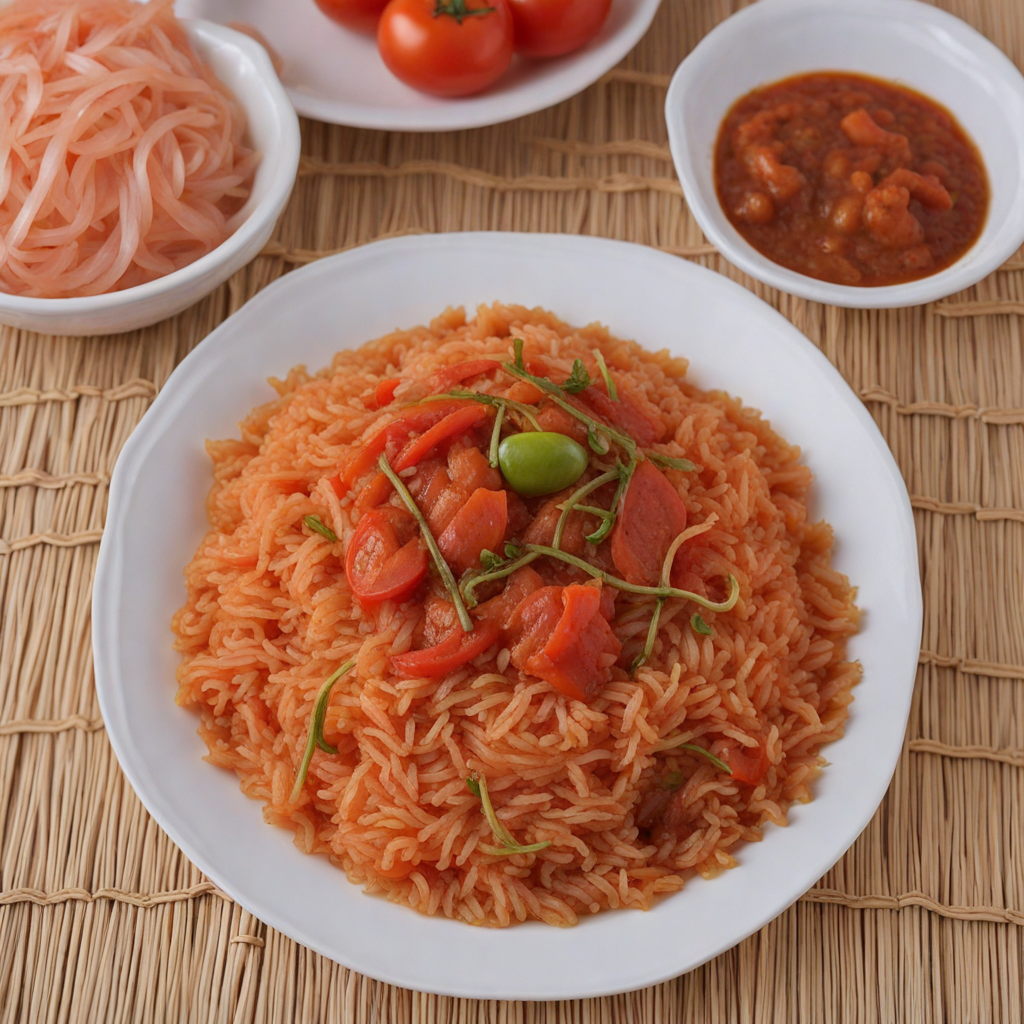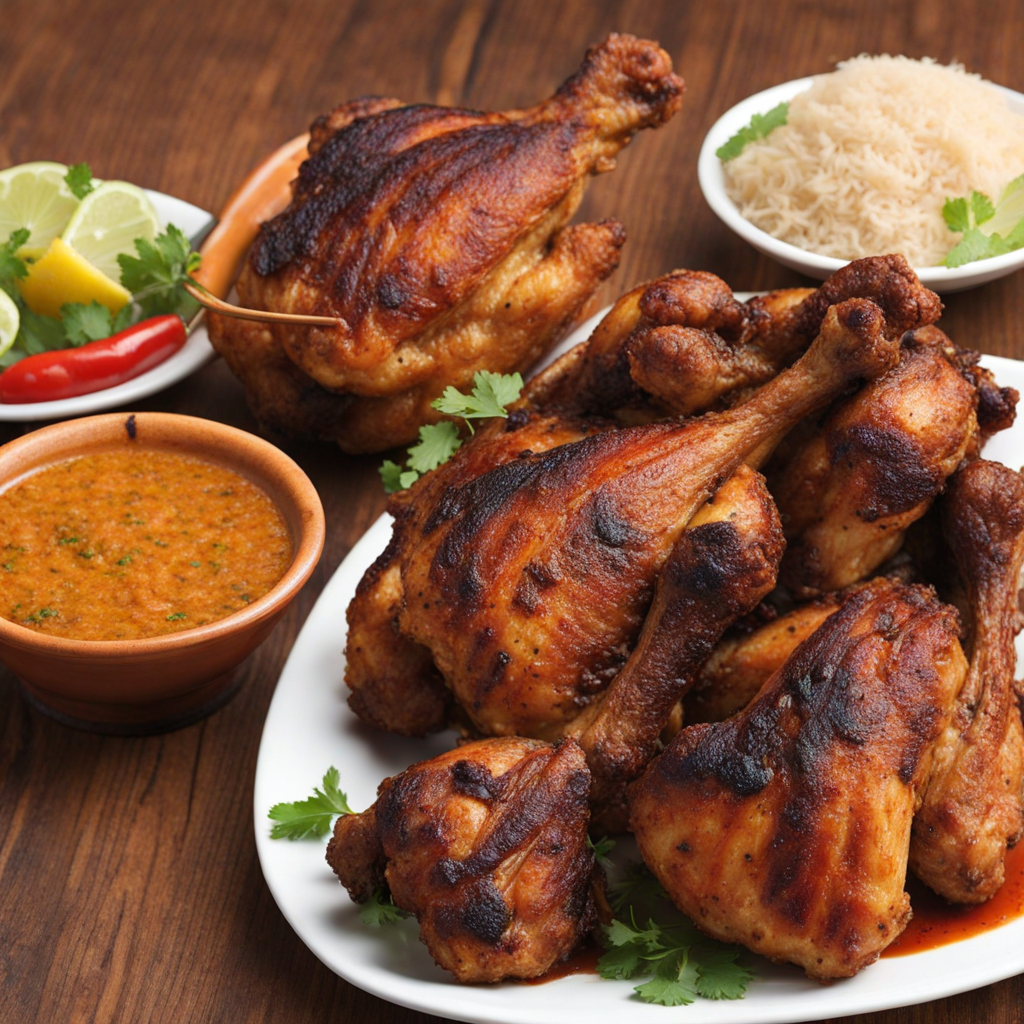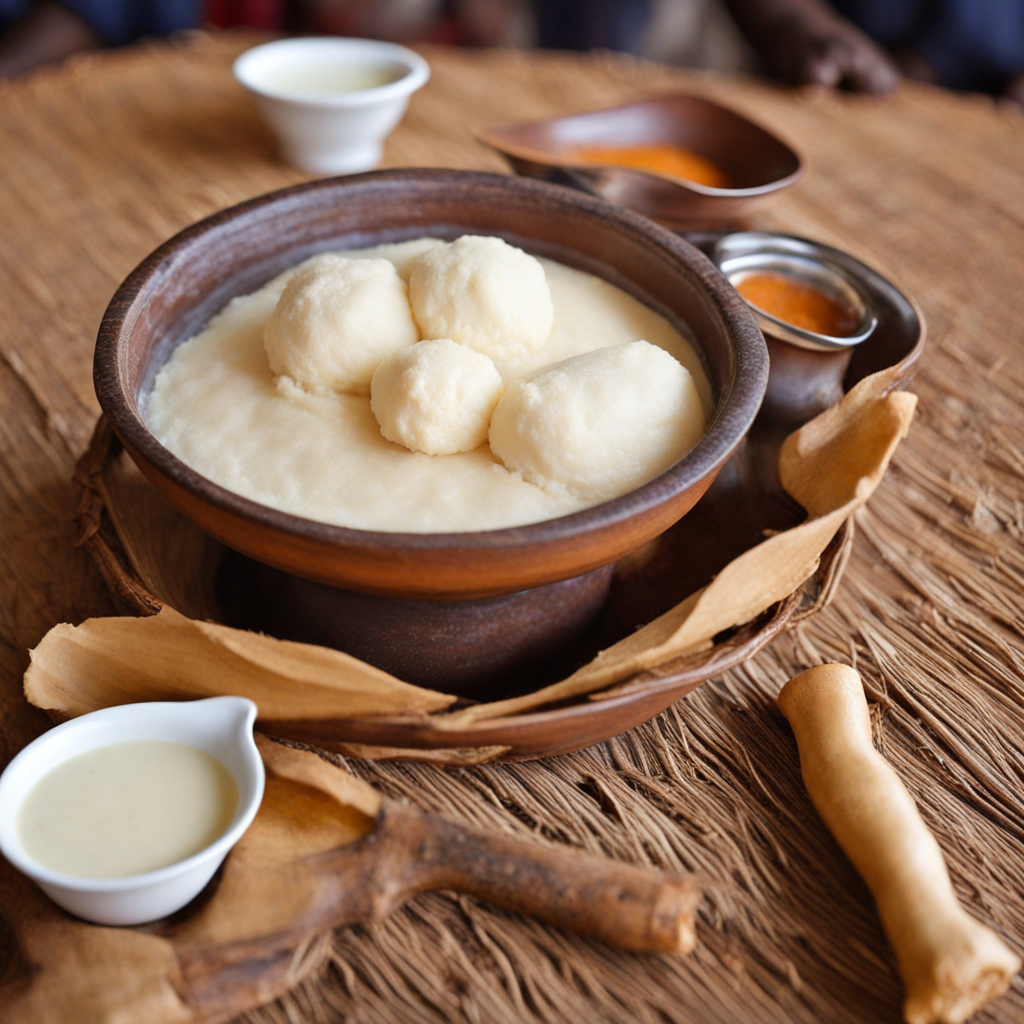Riz Gras
Riz Gras is a vibrant and hearty dish from Burkina Faso that encapsulates the rich culinary traditions of West Africa. At its core, Riz Gras consists of rice cooked with a medley of vegetables, proteins, and a fragrant blend of spices that reflect the local flavors. The dish often features a base of long-grain rice, which is typically sautéed with onions, tomatoes, and bell peppers, creating a colorful and aromatic foundation. The addition of various proteins, such as chicken, beef, or fish, not only enhances the dish's nutritional value but also infuses it with deep flavors, making each bite a delightful experience. The spices used in Riz Gras are essential to its character, with common seasonings including garlic, ginger, and chili, which provide a gentle heat that warms the palate. The use of local herbs and spices adds complexity and depth, allowing for variations that cater to personal tastes. The dish is often accompanied by a spicy sauce, which can range from mildly spicy to fiery, adding a layer of zest that elevates the overall flavor profile. Traditionally, Riz Gras is served as a communal dish, encouraging sharing and togetherness, which is a vital part of the dining experience in Burkina Faso. This dish is not only a feast for the senses but also a reflection of the agricultural bounty of the region. The combination of rice with locally sourced ingredients showcases the importance of seasonal produce in Burkinabé cuisine. With each serving of Riz Gras, one can savor the essence of Burkina Faso's culinary heritage, making it a must-try for anyone looking to explore new and exciting flavors. Whether enjoyed at a family gathering or a local restaurant, Riz Gras promises to leave a lasting impression on your taste buds.
How It Became This Dish
The History of Riz Gras: A Culinary Gem from Burkina Faso #### Origins and Ingredients Riz Gras, which translates to "fat rice," is a beloved dish hailing from Burkina Faso, a landlocked country in West Africa. The dish's name reflects its essential components, primarily rice cooked with a generous amount of oil or fat, often from meat, along with an assortment of vegetables, spices, and sometimes protein sources like chicken, beef, or fish. The dish embodies the rich culinary traditions of the country and serves as a staple in many Burkinabé households. The origins of Riz Gras can be traced back to the agricultural practices and the culinary habits of the people in the region, particularly the Mossi ethnic group, who make up a significant portion of Burkina Faso's population. Rice was introduced to West Africa through trade and colonial influences, becoming a staple crop that adapted well to local agricultural methods. The indigenous people, who traditionally cultivated millet and sorghum, began to incorporate rice into their diets, leading to the creation of various rice-based dishes, including Riz Gras. #### Cultural Significance Riz Gras is more than just a dish; it is a symbol of community, celebration, and cultural identity. In Burkina Faso, food is an integral part of social life. Meals are often shared among family and friends, and Riz Gras frequently takes center stage during communal gatherings, weddings, and festive occasions. The preparation of Riz Gras involves collaboration; family members and friends often come together to cook, reinforcing social bonds and community ties. The dish also reflects the agricultural cycles and seasonal changes in Burkina Faso. The availability of fresh vegetables and local meats influences the variations of Riz Gras. For instance, during harvest season, the dish may feature a bounty of fresh produce, while in the dry season, it may rely more on preserved items. This adaptability not only showcases the resourcefulness of the people but also emphasizes the importance of seasonal eating, a concept that has gained global recognition in recent years. #### Ingredients and Preparation The core ingredients of Riz Gras are quite simple yet versatile. The rice is typically parboiled, then sautéed with onions and garlic in oil or animal fat, which gives it a rich flavor. The choice of meat—beef, goat, or chicken—adds depth to the dish, while vegetables like carrots, bell peppers, and tomatoes provide color and nutrition. Spices such as chili pepper, ginger, and bouillon cubes enhance the dish's flavor profile, making each preparation unique. The cooking techniques associated with Riz Gras vary by region and household. Some families may opt for a one-pot method, where all ingredients are cooked together, allowing the flavors to meld. Others might prepare the rice separately and mix it with the sauce and meat just before serving. This flexibility in preparation reflects the diverse culinary traditions across Burkina Faso and the influence of neighboring countries. #### Evolution Over Time As Burkina Faso has evolved, so too has Riz Gras. Historically, the dish was primarily prepared in rural areas, where cooking methods relied on open flames and traditional pots. However, with urbanization and modernization, the preparation of Riz Gras has adapted to contemporary lifestyles. In urban centers like Ouagadougou, the capital city, you can find restaurants and street vendors offering Riz Gras, catering to busy city dwellers and visitors who wish to experience authentic Burkinabé cuisine. The globalization of food culture has also introduced new ingredients and cooking techniques. While traditional recipes remain popular, younger generations are experimenting with fusion culinary practices, incorporating international flavors or alternative ingredients into Riz Gras. This evolution showcases the dynamic nature of food culture in Burkina Faso, where tradition and modernity coexist. #### Riz Gras in Contemporary Burkina Faso Today, Riz Gras retains its status as a staple dish within Burkinabé cuisine. It is enjoyed across different socioeconomic classes, often served at gatherings, celebrations, and everyday meals. Its affordability and the accessibility of its ingredients make it a favorite among families, while its rich flavor profile appeals to a wider audience. In recent years, there has been a growing movement to promote local culinary heritage, and Riz Gras has found itself at the forefront of this effort. Food festivals and cultural events often showcase traditional dishes, allowing chefs and home cooks to share their interpretations of Riz Gras with a broader audience. This revival of interest in local cuisine also coincides with a global trend towards sustainable eating and appreciation for traditional food systems. Furthermore, the dish has garnered attention beyond Burkina Faso's borders. As the world becomes more interconnected, Burkinabé cuisine is gaining recognition on the international stage, with chefs and food enthusiasts seeking to learn about and celebrate the country's rich culinary traditions. Riz Gras, as one of its hallmark dishes, plays a crucial role in showcasing the flavors and culture of Burkina Faso to the world. #### Conclusion Riz Gras is more than just a dish; it is a reflection of Burkina Faso's history, culture, and the resilience of its people. From its origins rooted in local agricultural practices to its evolution in contemporary society, Riz Gras encapsulates the essence of Burkinabé cuisine. As it continues to adapt and thrive, this culinary gem serves as a testament to the enduring power of food to connect people, celebrate heritage, and foster community. Whether enjoyed at a bustling market stall or a family gathering, Riz Gras remains a cherished part of Burkina Faso's culinary landscape, inviting all who taste it to savor the rich flavors and traditions of this West African nation.
You may like
Discover local flavors from Burkina Faso







